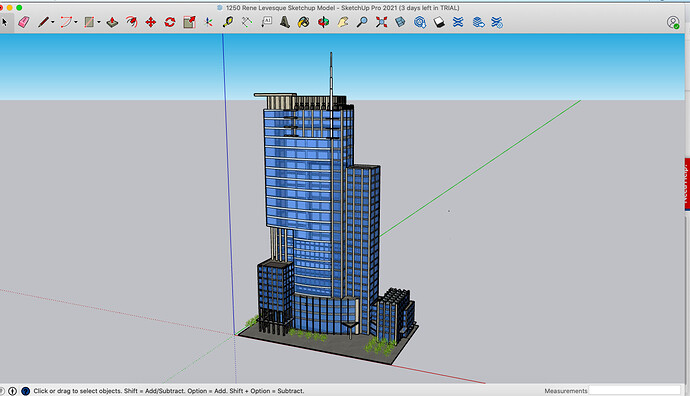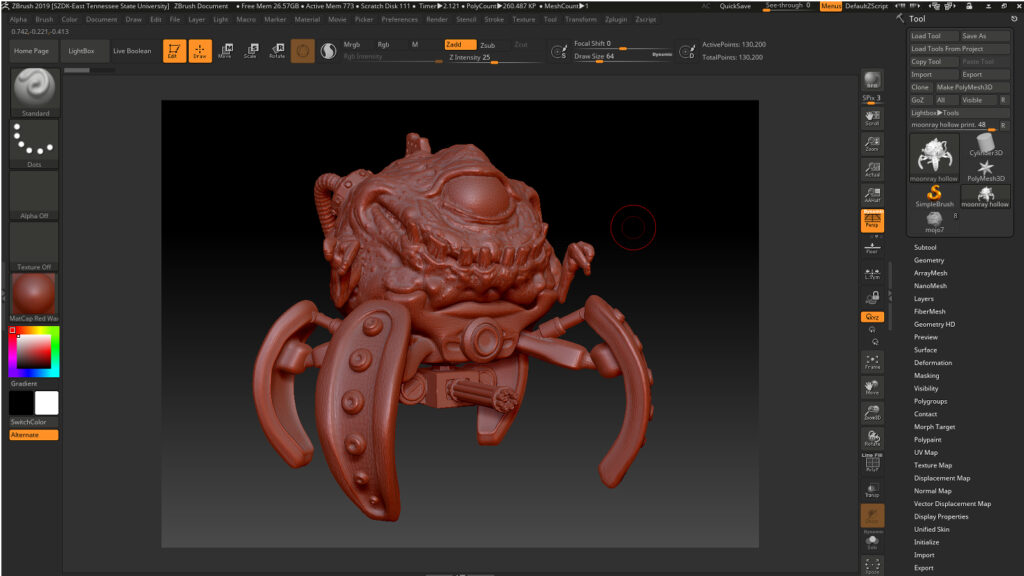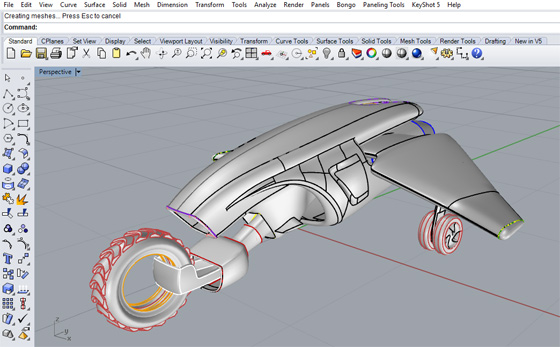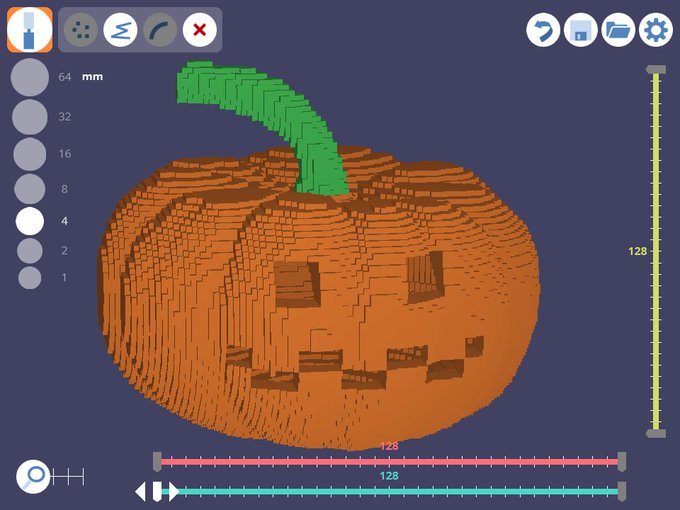Best 3D Modeling Software: A Comprehensive Guide
I. Introduction
Hello there, fellow 3D modeling enthusiasts! If you’ve stumbled upon this article, chances are you’re on the hunt for the best 3D modeling software, right? Well, you’re in luck! As a 3D modeling enthusiast myself, I’ve used and tested various software over the years, and I’m excited to share my knowledge with you.
II. Understanding 3D modeling software
When exploring the realm of digital design, one cannot overlook the pivotal role of 3D modeling software. This type of software has become a cornerstone in various industries, revolutionizing how professionals and creatives bring their visions to life. Let’s delve into what 3D modeling software is and why it’s so indispensable in today’s digital landscape.
What is 3D Modeling Software?
- Digital Sculpting: At its core, 3D modeling software is a tool that enables the creation, manipulation, and alteration of digital objects in three-dimensional space.
- Wide Range of Applications: From designing intricate architectural structures to sculpting detailed characters for video games, this software is versatile.
- Creation and Simulation: Beyond mere modeling, these programs allow for simulating real-world physics, lighting, and materials, adding an extra layer of realism to the designs.
Key Industries Benefiting from 3D Modeling Software
- Architecture: Architects use 3D modeling to visualize building designs, allowing for better planning and presentation of architectural projects.
- Engineering: In engineering, this software assists in creating precise models of machinery, automotive parts, and other technical components.
- Game Development: The gaming industry relies heavily on 3D modeling software to create immersive environments and realistic characters.
- Film and Animation: Filmmakers and animators use these tools to generate special effects, animated features, and even entire virtual sets.
- Product Design: It’s also widely used in product design for conceptualizing, prototyping, and visualizing new products.
Why is 3D Modeling Software Crucial?
- Enhanced Visualization: It allows for the visualization of ideas and concepts before they are brought into the physical world, saving time and resources.
- Precision and Accuracy: These tools offer unmatched precision, which is vital in industries like engineering and architecture.
- Creative Freedom: They provide an expansive canvas for creative expression, allowing artists and designers to push the boundaries of imagination.
- Efficiency and Collaboration: Many 3D modeling programs facilitate easy collaboration among teams, streamlining workflows and enhancing productivity.
III. The need for the best 3D modeling software

In the dynamic world of digital design, the choice of 3D modeling software can significantly impact the efficiency and quality of your work. Whether you are a seasoned professional in architecture, engineering, or a budding game developer or animator, the right software is not just a tool, but a vital partner in your creative endeavors. Let’s explore why selecting the best 3D modeling software is crucial across various fields.
Enhancing Professional Workflows
- Streamlining Design Processes: Advanced 3D modeling tools automate many tedious tasks, allowing professionals to focus more on creative aspects.
- Error Reduction: High-end software comes with features that detect and reduce errors in designs, which is particularly important in fields like architecture and engineering.
- Integration with Other Tools: The best software often integrates seamlessly with other tools and platforms, facilitating a smoother workflow and collaboration.
Boosting Design Quality and Realism
- Advanced Features: Top-tier 3D modeling software offers a range of advanced features, like realistic texturing and lighting, that can significantly enhance the quality of designs.
- Precision and Detail: These programs allow for incredibly detailed models which are essential in professional settings like product design and architectural visualization.
- Simulation Capabilities: Many of these tools can simulate real-world physics, which is invaluable for fields like animation and game development.
Elevating the Creative Process
- Creative Freedom: The right software provides an extensive range of tools and features, giving creators the freedom to experiment and bring their unique visions to life.
- Time-Saving: Efficient modeling software can drastically reduce the time taken to realize a concept or design, thereby speeding up the creative process.
- Learning and Growth: Quality software often comes with educational resources, helping users to continuously learn and improve their skills.
Considerations for Different User Groups
- For Architects and Engineers: Tools that offer precision, compatibility with CAD software, and the ability to handle complex structures are essential.
- For Game Developers and Animators: Look for software with robust animation tools, game physics, and good rendering capabilities.
- For Hobbyists and Beginners: User-friendly interface, strong community support, and a gentle learning curve are key features to consider.
IV. What to look for in 3D modeling software

Choosing the right 3D modeling software is a critical decision that can significantly influence your productivity and creative output. With a myriad of options available in the market, it’s essential to know what factors to consider to find the software that best suits your needs. This section outlines key aspects to look for when selecting 3D modeling software, ensuring you make an informed choice.
Key Factors to Consider
- Ease of Use
- User Interface: A well-designed, intuitive user interface is crucial, especially for beginners.
- Learning Curve: Consider how easy it is to learn the software. Resources like tutorials, forums, and community support play a pivotal role.
- Workflow Compatibility: The software should complement and streamline your existing workflow, not complicate it.
- Flexibility and Customization
- Versatility: The software should be versatile enough to cater to different modeling styles and industries, whether it’s architectural visualization, product design, or character modeling.
- Customization Options: Look for software that allows customization of tools and interfaces to suit your specific needs.
- Features and Capabilities
- Modeling Tools: Ensure the software has a comprehensive set of tools for your specific type of modeling work.
- Rendering and Texturing: High-quality rendering capabilities and advanced texturing tools can greatly enhance the final output.
- Animation and Simulation Features: For animators and game developers, robust animation and physics simulation features are essential.
- Cost Considerations
- Pricing Structure: Evaluate if the software’s pricing structure aligns with your budget. This could be a one-time purchase, subscription-based, or even free.
- Long-term Value: Consider the long-term value of the software, including updates, support, and additional features that might require future investment.
- Community and Support
- Community Engagement: A strong user community can be a valuable resource for learning and troubleshooting.
- Customer Support: Reliable customer support is crucial, especially for professional users who rely on the software for critical projects.
V. Review of the Best 3D Modeling Software
In no particular order, here are my top picks:
- AutoCAD
- Sketchup
- Blender
- ZBrush
- Rhinoceros 3D
- 3D Slash
VI. Using AutoCAD for 3D Modeling

AutoCAD, a long-standing leader in the 3D modeling and CAD (Computer-Aided Design) software industry, offers a powerful suite of tools for professionals in architecture, engineering, and construction. Known for its precision, versatility, and advanced capabilities, AutoCAD has become a go-to software for designers and drafters worldwide. Here, we delve into the standout features of AutoCAD that make it a top choice in the realm of 3D modeling.
Precision Drafting and Design Capabilities
- Accuracy: AutoCAD provides tools for extremely precise drafting and design, essential in professional blueprints and models.
- Customization: It allows users to customize and automate workflows, enhancing productivity and efficiency in design processes.
- Detailed Documentation: With AutoCAD, creating detailed design documentation is streamlined, which is crucial for complex projects.
Extensive Library of Pre-drawn Objects
- Ready-to-use Components: AutoCAD comes with a vast library of pre-drawn objects and blocks, speeding up the design process and helping in quick prototyping.
- Industry-specific Libraries: Specialized toolsets for different industries like electrical design, mechanical engineering, and architecture are available.
2D and 3D Modeling Support
- Versatile Modeling: AutoCAD supports both 2D drafting and 3D modeling, catering to a wide range of project requirements.
- 3D Navigation Tools: The software includes intuitive 3D navigation tools, making the exploration and presentation of 3D models straightforward and effective.
Cloud-based Functionality for Remote Access
- Accessibility: AutoCAD’s cloud-based functionality allows users to access their designs anytime and anywhere, fostering flexibility and collaboration.
- Data Security: With cloud storage, there is an added layer of data security and backup, reducing the risk of data loss.
- Cross-device Compatibility: Users can view, edit, and share AutoCAD drawings across multiple devices, enhancing team collaboration and client presentations.
Additional Features
- Customizable UI: The user interface can be customized to suit individual preferences or project-specific needs.
- Integration with Other Tools: AutoCAD integrates seamlessly with other Autodesk products and a range of third-party applications, streamlining workflows.
- Regular Updates: Autodesk frequently updates AutoCAD with new features and enhancements, ensuring that users have access to the latest technology and tools.
VII. Exploring SketchUp: A Tool for Architects and Interior Designers

SketchUp has carved out a significant niche in the world of 3D modeling, particularly among architects and interior designers. Renowned for its user-friendly interface and versatile functionality, SketchUp is an accessible yet powerful tool that simplifies the process of designing and visualizing architectural and interior spaces. Let’s explore the standout features that make SketchUp a go-to choice for professionals in these fields.
Intuitive Pull/Push Design Tools
- Ease of Modeling: SketchUp’s pull/push tools are known for their simplicity and effectiveness, allowing users to create 3D models from 2D shapes effortlessly.
- User-Centric Approach: These tools are designed keeping in mind the ease of use for beginners, making 3D modeling more approachable.
- Flexibility in Design: The pull/push functionality offers great flexibility, enabling users to experiment with different forms and structures quickly.
Extensive 3D Warehouse of Models
- Vast Library of Resources: SketchUp provides access to an extensive 3D warehouse that includes a wide array of models and components.
- Time-Saving Feature: This feature saves valuable time for architects and designers by providing ready-to-use models that can be easily integrated into their projects.
- Community Contributions: The warehouse is not just a resource but also a community platform where users can share their models and benefit from others’ contributions.
Geo-Location with Google Earth
- Real-World Contextualization: SketchUp’s integration with Google Earth allows architects to place their models in a real-world context, enhancing the accuracy of their designs.
- Environmental Analysis: This feature aids in understanding the environmental factors like sunlight and terrain, crucial for architectural planning.
- Client Presentation: Presenting models in a real-world setting can be incredibly impactful during client presentations and proposals.
3D Printing Compatibility
- From Digital to Physical: SketchUp models can be easily prepared for 3D printing, bridging the gap between digital designs and physical models.
- Prototyping Tool: This compatibility makes SketchUp an excellent tool for rapid prototyping, especially in interior design and architecture.
Additional Highlights
- Dynamic Components: SketchUp allows the creation of dynamic components that can be manipulated for various uses, adding flexibility to the design process.
- Layout Functionality: The software includes a ‘Layout’ feature for creating presentation documents, offering a comprehensive package from modeling to presentation.
- Extensive Plugin Ecosystem: A wide range of plugins and extensions are available, enhancing the software’s functionality tailored to specific user needs.
VIII. Discovering Blender: A Powerful Open-Source 3D Modeling Tool

Blender, renowned in the 3D modeling world, stands out for being a free, open-source software packed with a comprehensive set of features. It caters to a broad spectrum of digital artists, from 3D modelers to animators, and game developers. In this deep dive, we explore the standout features of Blender that make it a preferred choice for professionals and enthusiasts alike.
Advanced Sculpting Tools and Brushes
- Variety of Brushes: Blender offers an extensive range of sculpting tools and brushes, enabling artists to shape and texture their models with high precision.
- Dynamic Topology: Its dynamic topology system allows for smooth and flexible sculpting, adapting the mesh resolution automatically as you sculpt.
- User-Friendly Interface: Despite its advanced capabilities, Blender maintains a user-friendly interface, making it accessible for both beginners and experienced users.
Powerful Rendering Capabilities
- Cycles Rendering Engine: Blender includes the Cycles rendering engine, known for its powerful and ultra-realistic rendering capabilities.
- Real-Time Rendering: With Eevee, Blender’s real-time render engine, artists can get immediate feedback on lighting and materials, significantly speeding up the creative process.
- High-Quality Outputs: Blender supports high-resolution rendering, ensuring that the final outputs are of professional quality, suitable for film, TV, and print.
Animation and Rigging Tools
- Comprehensive Animation Toolkit: Blender provides a full suite of animation and rigging tools, making it a go-to software for character animators and riggers.
- Non-Linear Animation (NLA): For complex animations, Blender’s NLA editor allows for powerful, non-linear editing and layering of animations.
- Motion Tracking: The software includes motion tracking capabilities, enabling the integration of 3D elements into live-action footage.
Comprehensive Video Editing and Game Creation Features
- Video Editing Suite: Blender comes equipped with a video editor, offering functionalities for basic actions like video cuts and splicing, as well as more complex tasks like video masking.
- Game Engine: While the integrated game engine was removed in recent versions, Blender offers comprehensive tools for game asset creation and is compatible with major game engines like Unity and Unreal Engine.
- VR Support: The software also includes support for virtual reality, allowing artists to create and explore their 3D scenes in an immersive environment.
Additional Highlights
- Regular Updates and Community Support: Being open-source, Blender is regularly updated with new features and improvements. It also has a strong community of users and developers who contribute to its development.
- Cross-Platform Compatibility: Blender works across different operating systems, making it accessible to a wide range of users.
- Extensibility with Python Scripts: Advanced users can further extend Blender’s functionality using Python scripting.
IX. Navigating ZBrush: A Leader in Digital Sculpting and Painting

ZBrush, developed by Pixologic, is a trailblazer in the world of 3D modeling, particularly renowned for its exceptional sculpting and painting capabilities. Widely favored by character artists, concept artists, and illustrators, ZBrush stands out for its ability to handle highly detailed models and provide an extensive range of creative tools. Here, we delve into the key features that make ZBrush a top choice for professionals in the digital arts.
Highly Advanced Digital Sculpting and Painting Program
- Sophisticated Sculpting Tools: ZBrush offers a comprehensive set of tools that allow for intricate sculpting. From subtle details to grand scales, artists can shape their models with unparalleled precision.
- Dynamic Tessellation: The software’s dynamic tessellation feature, known as Sculptris Pro, enables artists to sculpt freely without worrying about the underlying geometry.
- Seamless Integration: ZBrush integrates seamlessly with other industry-standard software, making it a versatile addition to any 3D artist’s toolkit.
Ability to Handle Models with Millions of Polygons
- Handling Complex Models: ZBrush is renowned for its ability to smoothly handle models with millions, or even billions, of polygons, which is essential for creating highly detailed artwork.
- ZRemesher: This feature redefines the way models are created by allowing automatic retopology, optimizing the polygon distribution for a more efficient workflow.
Variety of Brushes and Tools for Texture, Color, and Shaping
- Extensive Brush Library: ZBrush provides a vast array of brushes and tools, each designed for specific aspects of the sculpting process, such as texture, color, and shaping.
- Custom Brushes: Artists can also create and share their custom brushes, offering endless possibilities for personalization and creativity.
- Advanced Coloring and Texturing: With tools like Polypaint, artists can apply color and texture directly to the surface of their models without the need for UV mapping.
Inbuilt Instant Render Engine
- Powerful Rendering: ZBrush includes a powerful inbuilt render engine that allows artists to produce stunningly realistic images right within the software.
- BPR (Best Preview Render): This feature provides artists with a quick and efficient way to preview their work with advanced rendering effects like reflections, ambient occlusion, and depth of field.
- Real-Time Preview: ZBrush’s real-time preview feature ensures that artists can continuously view the rendered effect as they sculpt and paint.
Additional Features
- Immersive User Experience: The user interface in ZBrush is designed to be immersive and artist-friendly, prioritizing the creative flow.
- 3D Printing Compatibility: ZBrush is compatible with 3D printing processes, making it a go-to software for artists in the 3D printing industry.
- Constant Innovation: Pixologic is known for regularly updating ZBrush with new features and tools, keeping the software at the forefront of the industry.
X. Getting to know Rhinoceros 3D

Rhinoceros 3D, commonly referred to as Rhino, is a highly versatile and powerful 3D modeling software that has gained popularity across various industries. Renowned for its precision in modeling complex curves and free-form surfaces, Rhino is extensively used in fields like industrial design, architecture, product design, and jewelry design. Let’s explore the standout features that make Rhino a preferred tool for professionals who demand high levels of accuracy and flexibility in their design work.
Advanced Modeling Capabilities
- NURBS Modeling: Rhino excels in creating, editing, and analyzing NURBS (Non-Uniform Rational B-Splines) curves, surfaces, and solids. This feature allows for extremely precise modeling, essential in complex design projects.
- Flexibility in Design: With Rhino, there are no inherent limits on complexity, degree, or size beyond those of your hardware, offering unparalleled flexibility in 3D modeling.
Compatibility and Integration
- Broad Compatibility: Rhino is known for its compatibility with most design, drafting, CAM (Computer-Aided Manufacturing), engineering, analysis, rendering, and illustration software. This makes it a versatile tool that can easily fit into various production pipelines.
- File Exchange Support: Rhino supports a wide array of file formats, making it easy to exchange files with other software and facilitating collaborative workflows.
Rendering and Animation
- Rendering Tools: Rhino comes with powerful rendering tools that enable users to visualize their models with realistic materials and environments.
- Animation Features: While primarily a modeling tool, Rhino also provides basic animation tools, allowing designers to create walkthroughs and simple animations.
Comprehensive Documentation and Analysis
- Documentation: Rhino allows users to document their models with precision, supporting the creation of detailed 2D drawings from 3D models.
- Analysis Tools: It offers robust analysis tools, essential in ensuring the accuracy and feasibility of designs, especially in engineering and architecture.
User-Centric Interface and Customization
- Intuitive Interface: Rhino is designed with a user-friendly interface, making it accessible for beginners while offering advanced capabilities for experienced users.
- Customization: Users can customize the interface to suit their workflow and can also extend Rhino’s capabilities through a wide range of plugins.
Additional Highlights
- Community and Resources: Rhino has a strong community of users and developers, offering a wealth of learning resources, plugins, and support.
- Regular Updates: The developers of Rhino consistently update the software, adding new features and improvements to keep up with the evolving needs of users.
XI. Introduction to 3D Slash: A Beginner-Friendly 3D Modeling Tool

3D Slash has emerged as a highly accessible and engaging 3D modeling software, particularly suited for beginners, kids, and students. Its approach to 3D design is uniquely user-friendly, employing a fun and interactive building-block concept that simplifies the learning curve. This software is especially advantageous in educational settings, making it an excellent tool for introducing young minds to the world of 3D modeling. Let’s explore the standout features that make 3D Slash a preferred choice for those starting their journey in 3D design.
User-Friendly and Engaging Interface
- Building-Block Concept: 3D Slash utilizes a building-block approach, reminiscent of popular building toys, making it intuitive and enjoyable for users, especially children.
- Simplified Design Process: The interface is designed to be straightforward and easy to navigate, breaking down the complexities of 3D modeling into manageable, fun activities.
Versatile Platform Compatibility
- Multi-Device Functionality: One of the key strengths of 3D Slash is its versatility. Users can design using various devices, including tablets, smartphones, and computers, offering flexibility in how and where they create.
- Cross-Platform Accessibility: Whether in a classroom, at home, or on the go, 3D Slash’s cross-platform compatibility ensures that the software is accessible from any device with an internet connection.
Direct Export for 3D Printing
- 3D Printing Ready: 3D Slash allows users to export their models directly for 3D printing, making it easy to bring digital creations into the physical world.
- File Compatibility: The software supports common 3D printing file formats, ensuring compatibility with a wide range of 3D printers.
Collaboration Features for Educational Settings
- Classroom Collaboration: 3D Slash includes features that facilitate collaborative projects, making it an ideal tool for classroom settings and group activities.
- Educational Integration: Teachers can use 3D Slash to introduce students to basic concepts of 3D modeling and design in a fun and interactive way.
Additional Highlights
- Engaging Learning Tool: The gamified approach of 3D Slash helps in maintaining student interest and engagement, making learning both fun and effective.
- Customizable Templates: The software offers customizable templates to jumpstart the design process, especially useful for beginners.
- Community and Support: 3D Slash has a supportive community and provides resources to help users get started and progress in their 3D modeling journey.
XII. Conclusion
Well, there you have it—my rundown of the best 3D modeling software available today. Each one has its own strengths and quirks, so I recommend trying them out to see which one suits your needs the best. Remember, the best software is the one that fits your workflow and helps bring your creative vision to life.
XIII. Frequently Asked Questions
- Which 3D modeling software is the best for beginners?
I’d recommend 3D Slash for absolute beginners, particularly kids and students. Its user-friendly interface makes 3D design accessible and fun. - Which software is the best for professional use?
It depends on your specific needs. AutoCAD is a versatile tool that is used across various industries, whereas ZBrush shines in the digital art and gaming industry. Rhinoceros 3D is great for precise modeling in industrial design. - Is there any free 3D modeling software that is good?
Yes, Blender is a fantastic option that is completely free. It comes with a comprehensive set of 3D modeling tools and features that cater to professionals and beginners alike. - Which software is the best for 3D printing?
SketchUp has strong 3D printing capabilities and even allows you to export your models directly for 3D printing. - Can I use these softwares on my Mac?
Yes, all the software listed in the article have versions compatible with Mac OS.
Resources
- https://www.autodesk.com/
- https://www.sketchup.com/
- https://www.blender.org/
- https://www.maxon.net/en/zbrush
- https://www.rhino3d.com/
- https://www.3dslash.net/index.php
- https://www.udemy.com/topic/3d-modeling/
- https://www.ptc.com/en/technologies/cad
- https://docs.blender.org/manual/en/latest/editors/nla/index.html




